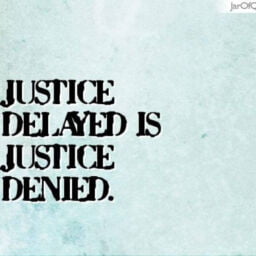FIRST INFORMATION REPORT
First Information Report (FIR) is the document incorporated by a police officer relating to the commission of a cognizable offence to be signed by an informant based on which police investigate the case and acquire information. This definition is provided under section 154 of the Code of Criminal Procedure.
REMEDY FOR DENIAL OF FIR
In the case, Lalita Kumari vs. Govt. of U.P[1](2014) the issue raised was whether a police officer was bound to register an FIR on receiving any information about the cognizable offence under section 154 of the Code of Criminal Procedure. It was held by the Supreme Court that for the registration of the First Information if no step is taken by a police officer and a copy of FIR not handed over to the complainant, they can approach the concerned Magistrate for issuance of direction to get the complaint registered by the police officer. Section 154(3) of the Code of Criminal Procedure says that if any person is denied to register his/her complaint by the police officer in charge of the police station has the remedy to send the complaint to the Superintendent of Police who is then alleged to either investigate or direct any police officer in the manner provided under CrPC. But mere information on the phone received by a police officer without any details cannot be treated as a First Information Report[2]. In the case Krishna Kumar v. State of Uttar Pradesh (2010)[3] , it was said by the Supreme Court “Report need not contain the minutest details as to how the offence had taken place nor it is required to contain the names of the offenders or witnesses. But it must at least contain some information about the crime committed as also some information about how the cognizable offence has been committed”.
RECENT CASE
Recently The Delhi High Court [4]in the case of setting fire on a compound during north-east Delhi riots stated that “no multiple FIR can be registered for the same offence” and quashed the three among four complaints filed by four members of the same family against the same person for the same incident. Here the concern of examination is whether two or more First Information can be filed under Section 154 of Code of Criminal Procedure and understanding the pragmatic view of the “sameness” principle.
REGISTERING THE SECOND FIR
The possibility of filing a second FIR came up in the case Ram Lal Narang vs. State of Delhi [5] where the court identified the proximity of objects in two conspiracies since the substance of the matters was examined and it was found that the conspiracies were not identical to each other. Hence, two FIRs were permitted for investigation. But the scenario can be different in other cases where the facts and incident can be identified in various complaints.
In the judgment of Surendra Kaushik and Others vs. State of Uttar Pradesh (2013)[6], the court explained and applied the ‘Sameness Test’ by saying that if the second FIR alleges the improved version of the same offence cannot be permitted whereas ‘rival version’ of the same incident in multiple FIR can be permitted. This indicates that even if the complaint is against the same person accused of the corresponding incident has to be considered admissible albeit it should be characterized as a counter-complaint by different persons based on different persons. Hence, alleging a fresh investigation based on new complaints constituting the same incident will be ‘abuse of statutory power of investigation’ but in case of a rival version, investigation needs to be initiated in both complaints. As an example in the Arnab Goswami case [7]where several FIRs were lodged against the journalist, the Supreme Court took the discretion of quashing the various complaints filed in diverse jurisdictions except Maharashtra FIR said that it was an abuse of process as the facts were identical in every complaint.
Principle of Sameness can be applied by Court in:
- Examination of facts and circumstances raising several FIRs.
- The court has to look into the relationship of the incidents with each other or transactions of occurrence to find out the sameness of the incidents.
- The second FIR can be quashed if it is found that one incident is the part of same occurrence.
- But second FIR can be maintained if it is found that two incidents were not part of same occurrence.
Test of Sameness in the Same kind of offence and Same Offence
Same Offence is when mode, nature, and means of offence are distinct but the allegation and accused is same and since the offence occurs out of the same subject matter, the second FIR will not be registered but if it contains rival contention without improvement in facts such complaint will still be permissible[8]ame kind of offence means that the nature of the offence is the same along with the punishment in substantial law. In the case of the State of Jharkhand vs. Lalu Prasad, [9] the court primarily differentiated the same kind of offence and same offence and held that test of sameness cannot be applied on ‘same kind of offence’ because the offence can be different in their situation but the court quashed the second FIR as the test of sameness applicable to prevent double jeopardy under Article 20 of the constitution.
CONCLUSION
In conclusion to all the cases canvassed above the discretion is based on the application of tests and examination of whether subsequent First Information Reports will be sustained and maintained. If the matter of offence is the same and identical to the prior complaint then it is hard to sustain when tested by the Sameness Principle and on the other hand if the subject matter is different and not the same then the FIR will be treated as a counter-complaint and likely to be maintained by court of law.
Author(s) Name: Yashaswani Parashar (University of Petroleum and Energy Studies, Dehradun)
References:
[1] Lalita Kumari v. Govt. of U.P. [2014] AIR 187 (SC)
[2] Ravishwar Manjhi v. State of Jharkhand [2009] AIR 1262 (SC)
[3] Krishna Kumar v. State of Uttar Pradesh [2010] AIR 2254 (SC)
[4] Atir v. State NCT of Delhi [2021] SCC 4241 (SC)
[5] Ram Lal Narang v. State of Delhi [1979] AIR 322 (SC)
[6] Surendra Kaushik v. State of U.P. [2013] SCC 148 (SC)
[7] Arnab Ranjan Goswami v. Union of India [2020] SCC 450 (SC)
[8] Surendra Kaushik v. State of Uttar Pradesh [2013] SCC 148 (SC)
[9] State of Jharkhand v. Lalu Prasad [2017] SCC OnLine 551 (SC)
















